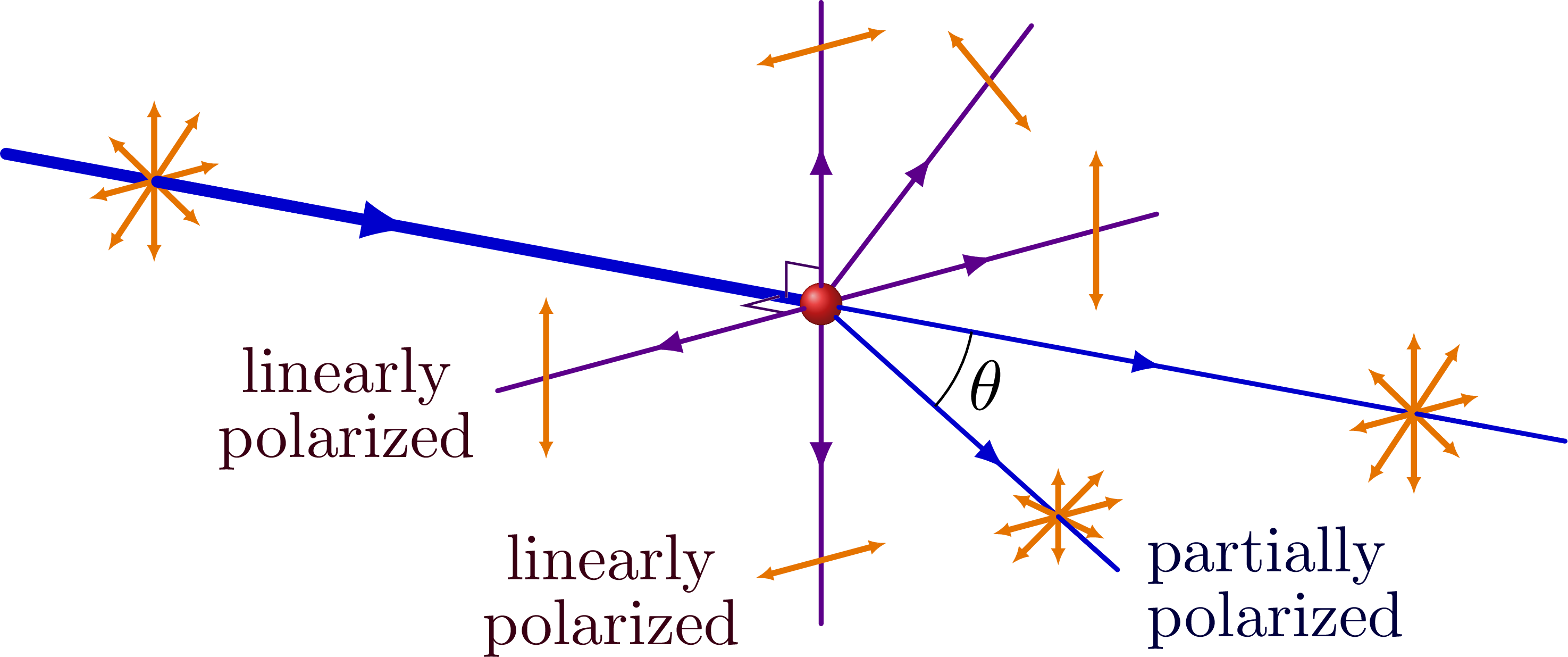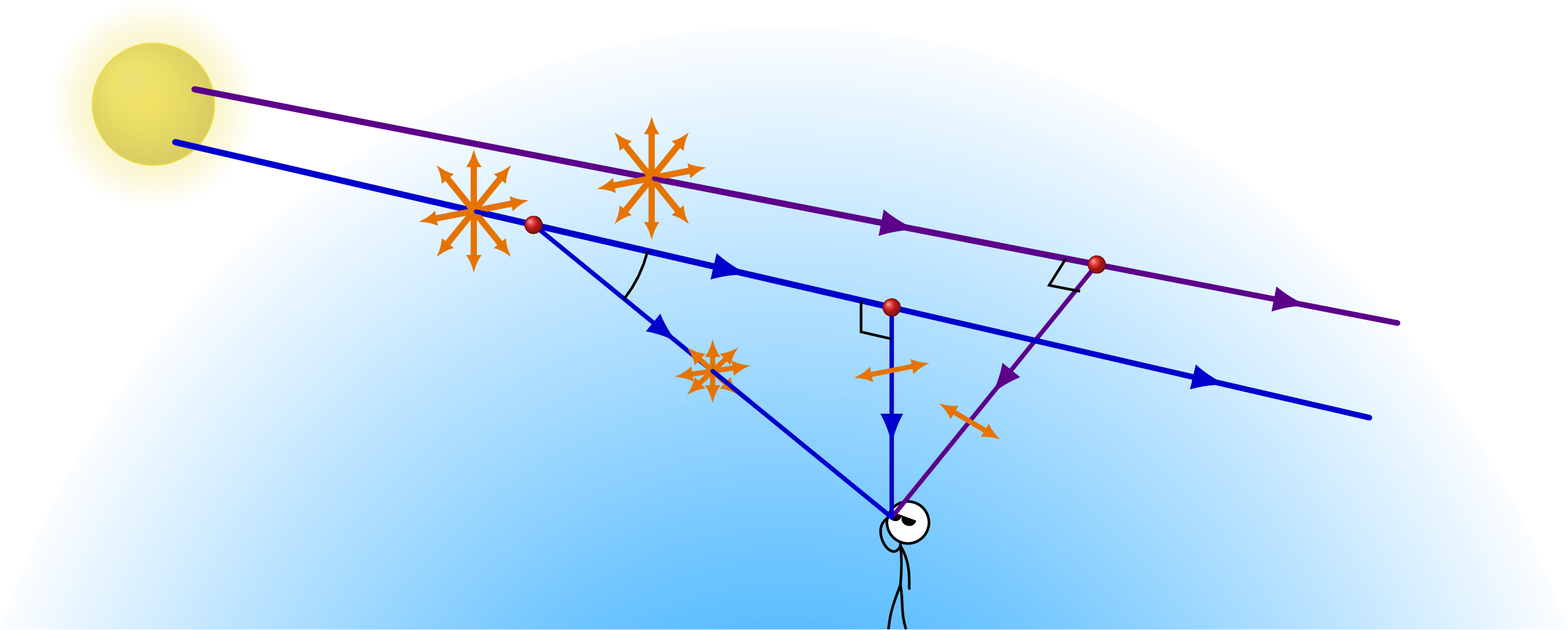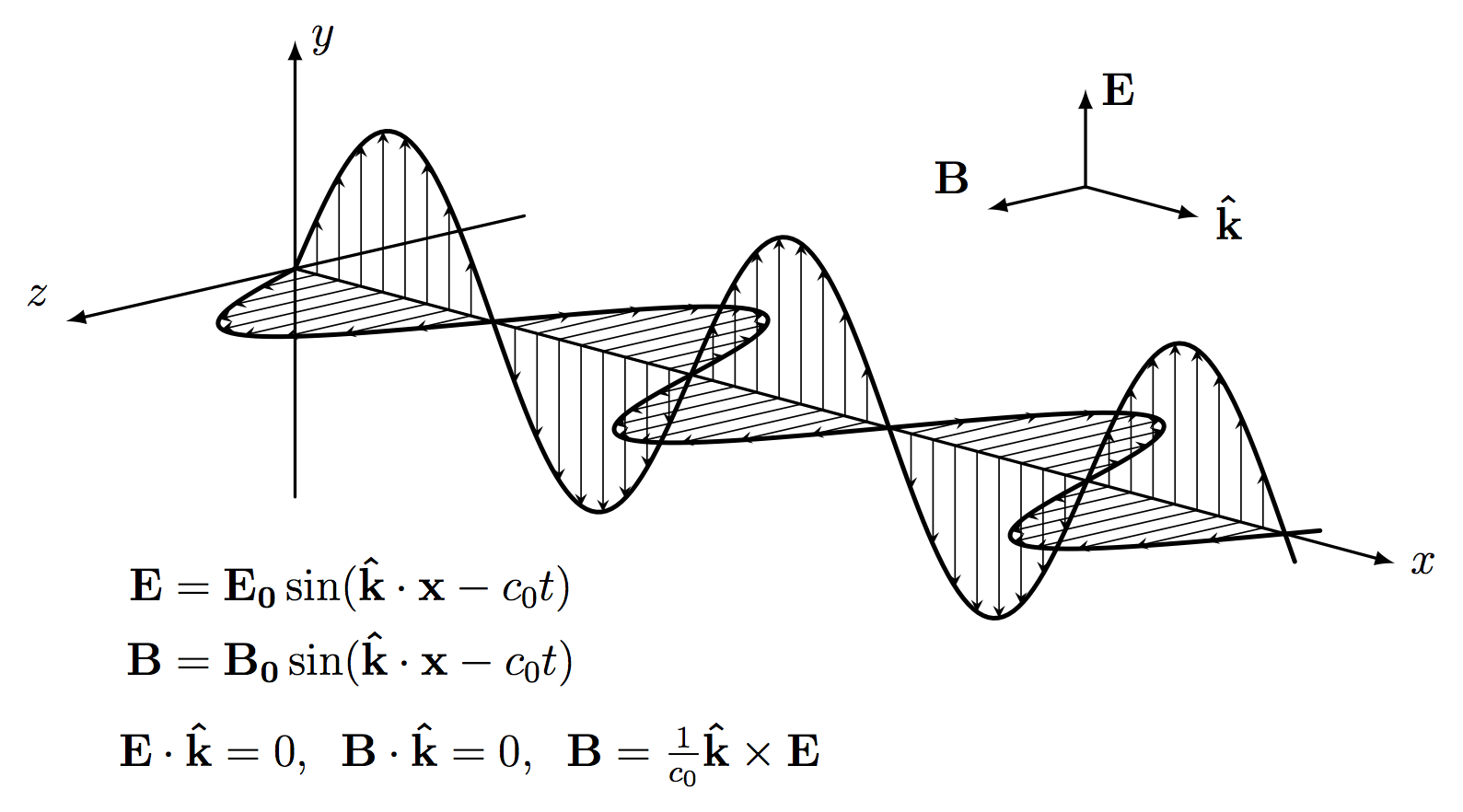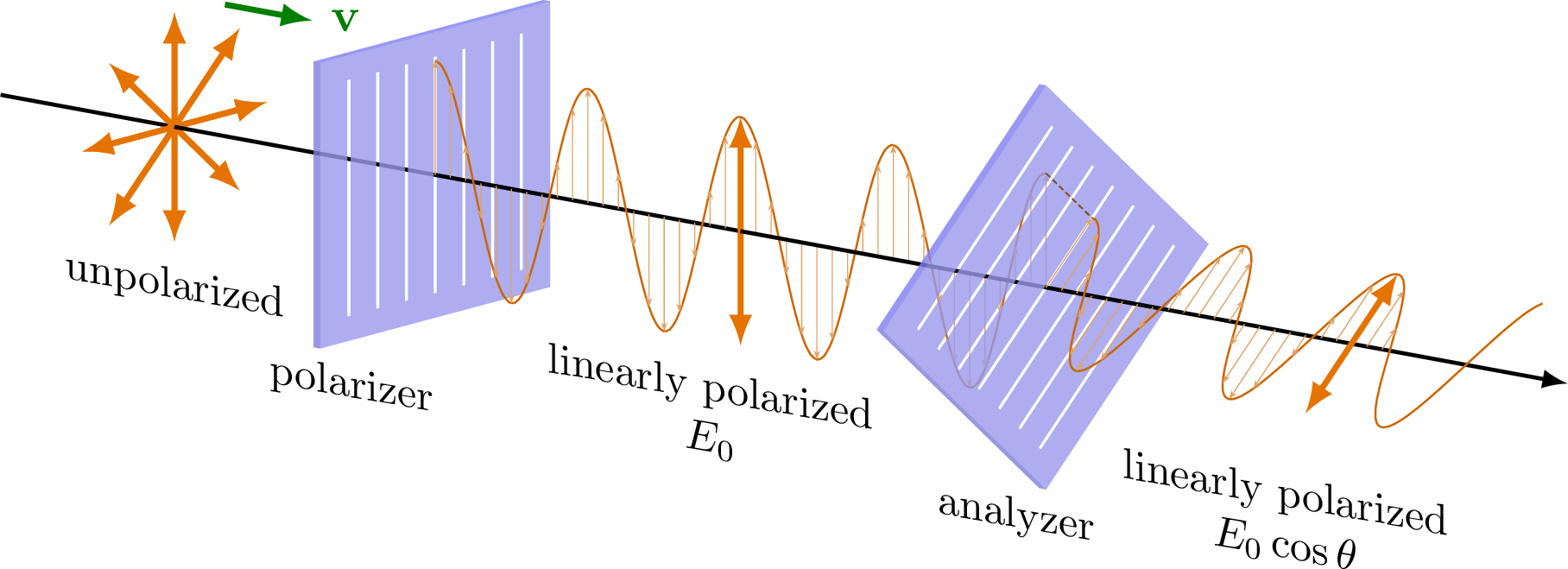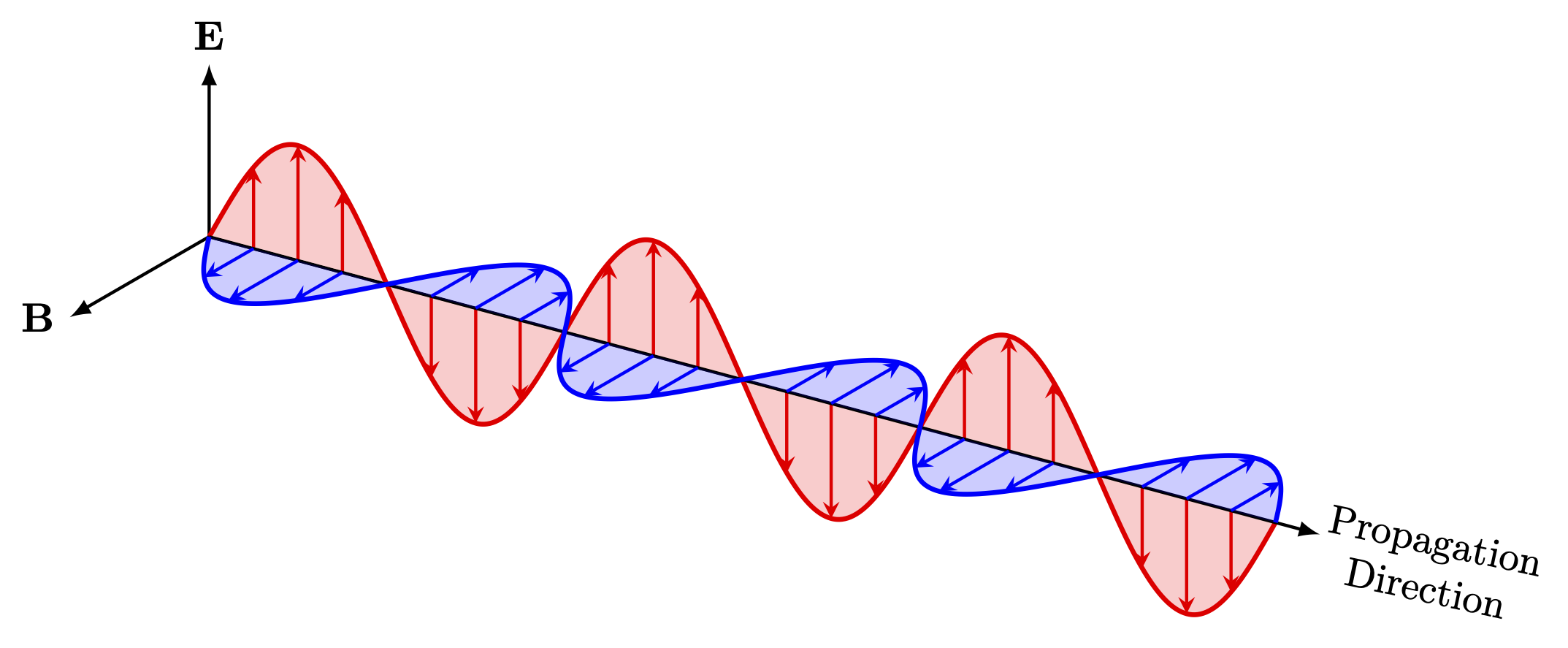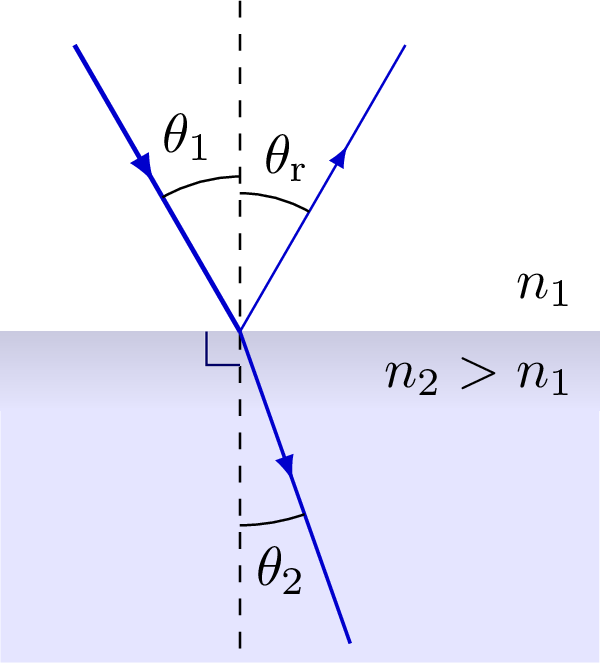Polarization by scattering, and polarization of sunlight in the blue sky.
For more related figures, please see the Optics category.
Edit and compile if you like:
% Author: Izaak Neutelings (May 2020)% Inspiration: https://tex.stackexchange.com/questions/285578/how-to-draw-parallelepiped-and-cube-with-latex/288101#288101\documentclass[border=3pt,tikz]{standalone}\usetikzlibrary{arrows,arrows.meta}\usetikzlibrary{calc}\usetikzlibrary{decorations.markings}\usetikzlibrary{angles,quotes} % for pic (angle labels)\usetikzlibrary{fadings}\tikzset{>=latex} % for LaTeX arrow head\usetikzlibrary{3d}\colorlet{myblue}{blue!80!black}\colorlet{mypurple}{blue!60!red!90!black}\colorlet{myred}{red!70!black}\colorlet{Ecol}{orange!90!black}\tikzstyle{myarr}=[-{Latex[length=3,width=2]}]\tikzstyle{Evec}=[Ecol,{Latex[length=2.8,width=2.5]}-{Latex[length=2.8,width=2.5]},line width=1]\tikzset{light beam/.style n args={2}{line width=#2,myblue,line cap=round,decoration={markings,mark=at position #1 with {\arrow{latex}}},postaction={decorate}},light beam/.default={0.5}{1}}\tikzfading[name=fade out,inner color=transparent!20,outer color=transparent!100]\tikzfading[name=strong fade out,inner color=transparent!0,outer color=transparent!99]\tikzfading[name=atmosphere,inner color=white,outer color=black]\newcommand\molecule[2]{\node[ball color=red,circle,inner sep=#2] at (#1) {};\node[very thin,draw=red!30!black,fill=red!60!black!70,circle,inner sep=#2,fill opacity=0.3] at (#1) {};%\draw[ball color=red,canvas is zy plane at x=0] (0,0) circle(0.5);}\newcommand\rightAngle[4]{\pgfmathanglebetweenpoints{\pgfpointanchor{#2}{center}}{\pgfpointanchor{#3}{center}}
Click to download: optics_scattering.tex • optics_scattering.pdf
Open in Overleaf: optics_scattering.tex


